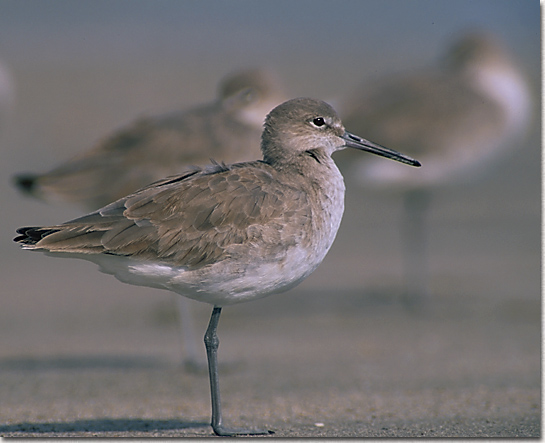

|
Willet |
|
Catoptrophorus semipalmatus |
| Description: 15" Large shorebird, gray-brown with straight bill, best identified in flight by its flashy black and white wing pattern, gray legs and thicker bill distinguish it from Greater Yellowlegs | Habitat: Wet grassy areas, moist prairies, salt and brackish marshes, bays, lakeshores, muddy banks of creeks. In winter, along beaches, mud flats and at Salton Sea, California. Often wades up to belly. Common. Noisy, especially when disturbed. |
| Nesting: 4 olive-buff eggs, spotted with brown, in a nest lined with weeds or bits of shell placed in a depression on open ground or in a grass clump. | Range: breeds from central Canada to California and Nevada, and along Atlantic and Gulf Coasts, winters along coasts from Oregon and Carolina southhward |
| Voice: loud ringing pill-will-willet and a quieter kuk-kuk-kuk-kuk -kuk | Diet:
Aquatic insects, worms, crustaceans, mollusks, fish. |
| Notes: Semi-colonial, often nesting synchronously. Maintain separate feeding and nesting territories. Strong fidelity to mate and to feeding territory between years. Male incubates at night, occasionally during midday. Female abandons mate and brood 2-3 weeks post-hatch; male attends brood for 2 more weeks. Often wade to belly and swim, conspicuous, noisy birds |
| When present in Oklahoma: present during summer/winter migration, not resident of Oklahoma |